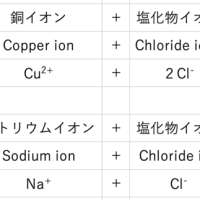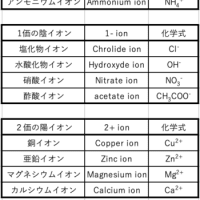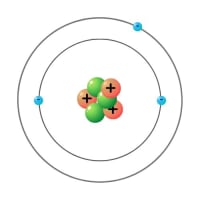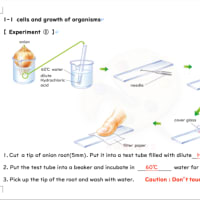小学校の理科の教科書にお目にかかる機会があったので、解説しつつ教材づくりのヒントを書いていく。
海外で勉強している子どもたちも日本語と英語の対比に注目しながら読んでくれると嬉しい。
I have a chance to read 5th grade Science textbook.
I try to write some points of this grade and give you hints for making materials of "weather".
If you live in foriegn country, you can read and compare Japanese and English with "weather".
word list
| 天気 | weather |
| 雲 | cloud |
| 晴れ | sunny |
| くもり | cloudy |
| 午前 | am |
| 午後 | pm |
| 北 | North |
| 南 | South |
| 東 | East |
| 西 | West |
| 太陽 | Sun |
| 乱層雲 | nimbostratus |
| 積乱雲 | cumulonimbus |
| 雲の量 | amount of clouds |
| 動く | move |
| 変化 | change |
| 昨日 | yesterday |
| 今日 | today |
| 春 | spring |
| 夏 | summer |
| 秋 | autumn |
| 冬 | winter |
| 気象衛星 | weather satellite |
この単元では専門用語は比較的少ないので、CLILのように英語を勉強するための単元とするのもよいかもしれない。
We have little terms in this unit, so we can study English as CLIL.
この単元は2つのパートに分かれている。 This unit has 2 parts.
①天気と雲の関係 Relationship of weather and cloud
②天気の変化 Change of weather
①天気と雲の関係 Relationship of weather and cloud
まずは天気の決め方を学ぶ。
雲量計を使い、空全体を10として雲の量が9〜10の時をくもりとし、それ未満は晴れとする。
雲は風のはたらきで動いており、雲の動きによって天気が変化していく。
雲は10種類に分類されており、それぞれに名前がつけられている。
それぞれの名称は中学校になってから覚えるので、この段階では可能であれば乱層雲と積乱雲の名前を覚えておくとよい。
雲の種類によって、雨が降ったり降らなかったりが決まる。
You study how you dicide a "weather" first.
You use cloud meter.
When clouds cover 90%~100% of the sky, it is cloudy.
Less than 90%, it is sunny.
The weather is changed by the movement of clouds.
The clouds are moved by the wind.
Clouds have 10 kind of it, each cloud has own name.
If you can, remember "nimbostratus" and "cumulonimbus".
You will study the name of clouds in junior high school.
Some kinds of cloud cause rain.
②天気の変化 Change of weather
インターネットやテレビ、新聞から数日間の天気の情報を読み取り、どのように変化しているかを調べる。
中緯度地域にある日本付近は、偏西風の影響によって天気は西から東へ変化する。
つまり、雲は風に乗って西から東へ動くのだ。
春は、偏西風によって移動性高気圧(晴れのもと)と低気圧(雨のもと)が交互に日本付近を通過する。
この単元は春に学習するので、天気の変化を観察しやすい。
中学校では他の季節も学習する。
教科書によっては、発展的内容として扱っていることがある。
You can read the information about the weather changing in a few days from the Internet, TV or newspaper.
The weather changes from West to East by the westerly wind in Mid-latitude or Japan.
Clouds move from West to East.
High pressure system (sunny) and low pressure system (rainy) pass over Japan alternately by the westerly wind in spring.
You study this unit in the spring, you can observe the weather change easily.
Also, you will study the weather in other season in junior high school.
Some textbooks treat the weather of other seasons as advanced contents.
勉強・教材づくりのポイント
タブレット端末などを用いて天気と時間の関係を記録するとよい。
タイムラプス機能を使うのもおすすめだ。
気象観測は方位磁石を使い、正確に北を向いて行うことがおすすめだ。
北を向くことで、雲が西から東へ動いていることが分かりやすくなる。
海外では新聞などが手に入りにくいので、気象庁のwebサイトなどから雲画像や雨量情報を手に入れるとよい。
この単元では、雲のようすや天気の変化を学ぶことも大事だが、資料の読み取りや資料の作り方を学ぶことも大切なので、どのようにレポートなどにまとめさせるかが重要である。
It is advisable to record the relationship between weather and time using a tablet terminal or the like.
It is also recommended to use the time-lapse function.
It is recommended that you use a compass and accurately face north when observing the weather.
By facing north, it becomes easier to see that the clouds are moving from west to east.
It is difficult to obtain newspapers overseas, so it is a good idea to obtain cloud images and rainfall information from the Japan Meteorological Agency website.
In this unit, it is important to learn about the appearance of clouds and changes in the weather, but it is also important to learn how to read and create materials, so it is important to learn how to summarize them in reports.

















